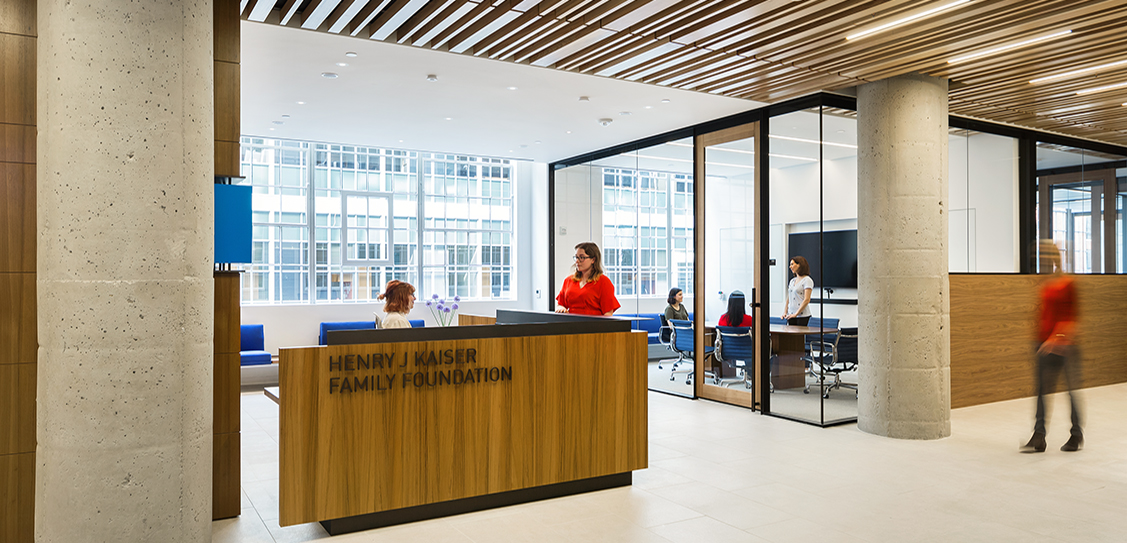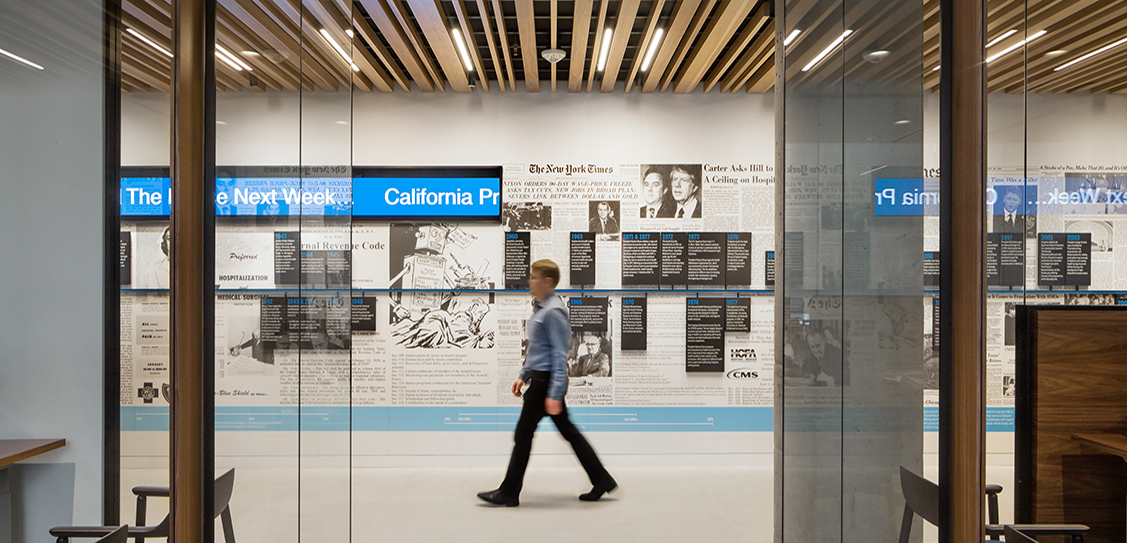Located in San Francisco’s China Basin neighborhood, the new 26,700ft² space is intended to meet the organisation’s unique needs in addressing national health issues and health policy and accommodate its various specialised functions including policy analysis and journalism and communications programmes.
The design team transformed a former industrial warehouse along the waterfront, creating an open, airy headquarters with extraordinary views to San Francisco Bay and spaces for both collaborative and individual work. The inherent conflict between these two objectives informed the solution, which features clusters of glass enclosed private offices strategically placed to feel private and inward focused when seated at a desk, but transparent and open to daylight and views when moving around the office.
Upon entering the lobby, guests are greeted by a digital wall display that features the latest health news headlines. The display is incorporated into an illustrative healthcare history timeline exhibit, developed in collaboration with the client. These two elements, headlines and history, travel in parallel along the entry wall to be experienced simultaneously.
The design incorporates existing steel sash windows and exposed raw concrete columns with modern elements and a palette of reclaimed walnut, bronze, and teak. The materials were influenced by both the Foundation and the project surroundings. The walnut finishes were inspired by reclaimed walnut locally sourced from Californian walnut groves and the use of bronze and teak were drawn from the liberty transport ships which Henry J. Kaiser built in bay area shipyards. As a whole, the space is arranged to take advantage of the daylight along the perimeter. Offices and large meeting places are located immediately adjacent to the windows. Elements that do not require direct access to daylight, such as the communal kitchen and pantry, copy and filing room, fitness room and small teaming areas are located toward the centre. The conference centre and board room are arranged as focal points within the space to take advantage of light and views of San Francisco Bay and Giants Stadium. The office is united by two large corridors running unobstructed the length of the space.
To support employee collaboration and connection, the kitchen and lunchroom are centrally located to create a hub for social interaction. The design team also carefully interwoven gathering spaces of varying sizes and qualities among the private offices to create a flexible work environment. The seating areas along main interior corridors allow for opportunities to casually gather, while shared meeting rooms give board members, the media, or KFF’s Washington, D.C. colleagues a place to work during their stay.
At the heart of the office is a large multifunctional conference centre space for events, which incorporates advanced acoustics, movable glass walls, flexible furniture, state-of-the-art audio-visual equipment, and food service support, providing KFF a dedicated place for internal workshops and presentations. The foundation also encourages outside organisations to use the space, free of charge, as part of their outreach to the community.



